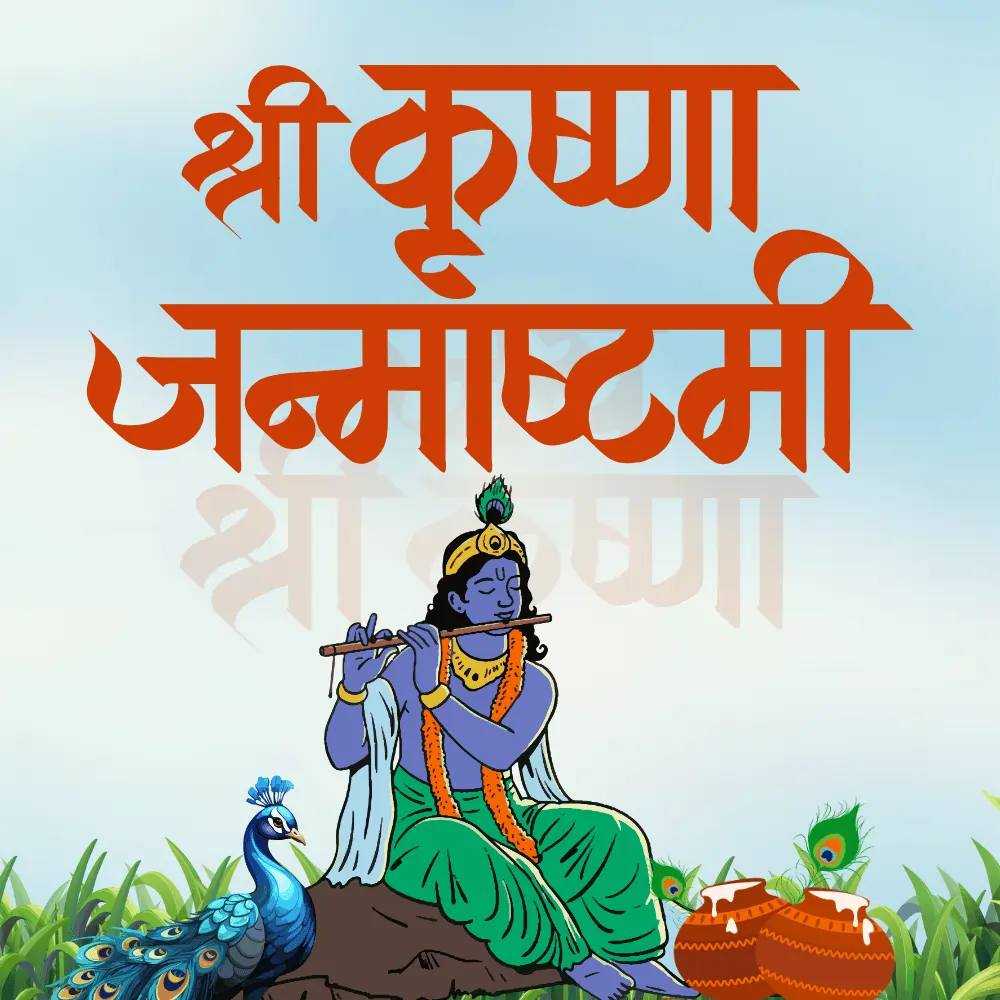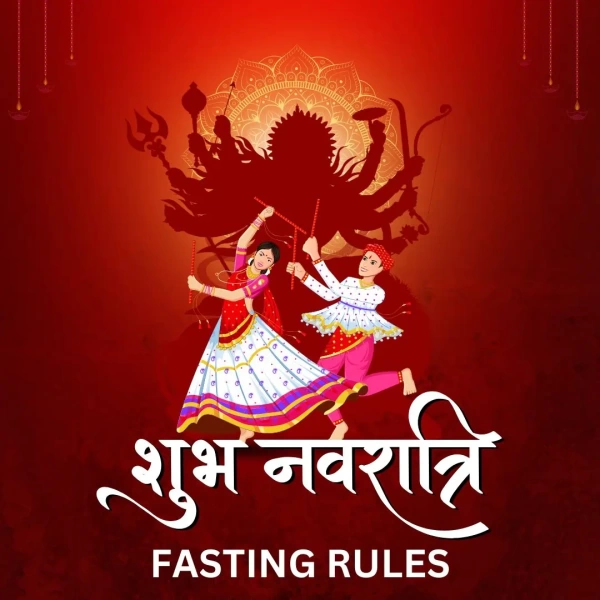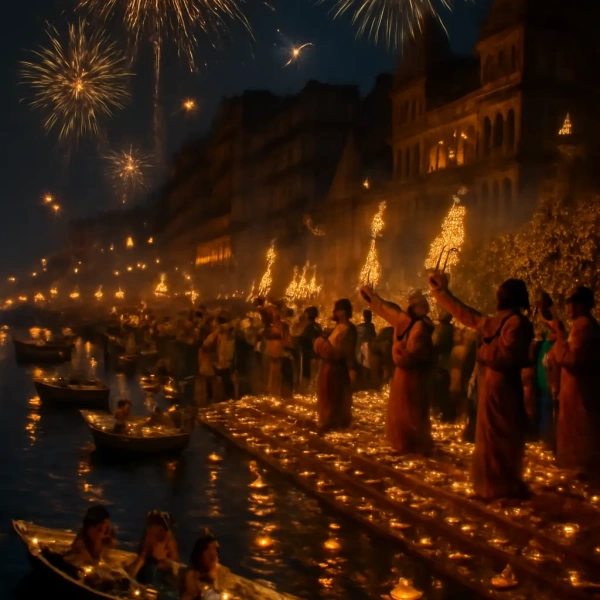Introduction
Janmashtami — the birth anniversary of Lord Krishna — is observed across India with fasting, bhajans, decorations, and the midnight Janmashtami puja to seek love, wisdom and protection. This guide is updated for 2026 with accurate dates, puja timing and practical instructions for performing the puja at home or online.
When is Janmashtami in 2026?
Janmashtami 2026 falls on Friday, 4 September 2026. The principal (Nishita) puja time is the midnight window 11:57 PM – 12:43 AM (midnight of Sep 4–5); that is the traditional time to perform the main puja/abhishekam.
Note: Janmashtami timing depends on the Ashtami tithi in the Krishna paksha of Bhadrapada; local panchang timings (city-specific) can shift exact muhurat by minutes — always confirm Nishita and parana times from your local panchang before publishing or performing.
Mythological significance (brief)
Krishna — the eighth avatar of Vishnu — was born to Devaki and Vasudeva on the Ashtami of Krishna Paksha in Bhadrapada. Janmashtami commemorates his birth and his leelas (divine acts), reminding devotees of dharma, bhakti and the Bhagavad Gita’s teachings.
What is Janmashtami Puja? (core elements)
Typical components: fasting (Nirjala or phalahar), bhajans/kirtans, bathing and dressing the Bal Gopal idol, offering panchamrit, butter/mishri, tulsi, reading Krishna katha or Bhagavad Gita, arti and sharing prasad. The midnight abhishekam and jhula (cradle) ceremony are central.
Preparations (before midnight)
- Clean and purify the puja area; decorate with flowers, peacock feather and lights.
- Arrange a small cradle (jhula) for Bal Gopal.
- Collect puja samagri: Bal Gopal idol/photo, panchamrit ingredients (milk, curd, honey, ghee, sugar), tulsi leaves, butter, mishri/panjiri, fruits, sweets, flowers, rice, turmeric, incense, diya, bell, conch, flute/peacock feather (optional).
- Prepare bhajan playlist or arrange musicians.
Step-by-step Puja Vidhi (midnight ritual)
- Sankalp — take a sincere vow to perform the puja.
- Kalash puja — place water + mango leaves in a copper/silver pot and a coconut on top; invoke the deity.
- Abhishekam — bathe Bal Gopal with Panchamrit and water.
- Dress & Alankara — dry and dress the idol in fresh clothes; add tulsi and peacock feather.
- Naivedya — offer butter, panjiri, sweets, fruits and tulsi.
- Chanting & Bhajans — recite mantras (e.g., Om Namo Bhagavate Vasudevaya 108 times) / sing bhajans.
- Aarti & Jhula — perform aarti; swing the cradle singing “Nand ke Anand Bhayo.”
- Prasad distribution — share prasad with family and community; donate if possible.
Can Janmashtami Puja be performed online? (verified)
Yes. Several established platforms offer live-streamed puja services where a priest performs the puja with your name/sankalp and shares a recorded/ live video and prasad delivery options. Examples (verify packages/availability and delivery timelines before listing on your site): Gurucool.life, SmartPuja, SriMandir, LivePujaYagya.
Do’s & Don’ts (concise)
Do: fast with devotion, chant Krishna names, offer homemade prasad, visit a Krishna temple if possible.
Don’t: consume tamasic food (meat, alcohol), quarrel, or sleep through Nishita puja if you intend to observe it personally.
Simple FAQs
Q1. When exactly is Janmashtami in 2026 — September 1 or September 4?
There has been confusion online. The correct date for Janmashtami in 2026 is Friday, 4 September 2026. The Nishita (midnight) puja time is 11:57 PM – 12:43 AM, crossing into September 5. Always check your local panchang because the Ashtami tithi may begin a few hours earlier or later depending on your city.
Q2. What are the puja timings for different regions in India?
The puja muhurat varies by location (e.g., Delhi, Mathura, Mumbai, Kolkata). The Nishita puja will generally remain within the same midnight window (11:57 PM – 12:43 AM), but sunrise and Ashtami ending times may differ by a few minutes. Devotees should confirm timings from a reliable local panchang or temple notice.
Q3. Do I need to observe a Nirjala fast (without food and water)?
Not necessarily. While Nirjala Vrat is considered most rewarding, many devotees observe a phalahar fast (fruits, milk, nuts) or a simple water-based fast. Children, elderly people, or those with health issues are not expected to do a strict Nirjala fast. What matters is devotion, not physical strain.
Q4. Can I do the Janmashtami puja without a Bal Gopal idol?
Yes. If you don’t have an idol, you can use a photo of Lord Krishna or even a symbolic representation like a printed picture. The essence of puja lies in bhakti (devotion), not just physical objects.
Q5. Is it compulsory to stay awake till midnight?
The most important ritual, the Nishita Puja, is performed at midnight. Ideally, devotees remain awake by singing bhajans, reciting the Bhagavad Gita, or joining temple events. If staying up is not possible, you may perform a shorter puja earlier but the full benefit is linked with midnight worship.
Q6. How do online Janmashtami pujas work in 2026?
Trusted platforms connect devotees with purohits via live video. You provide your name and Sankalp, the priest performs puja on your behalf, and prasad is shipped to your home. Some services also include Bal Gopal abhishekam, Gita recitation, and community pujas. For NRIs or people away from home, this is the most convenient way to participate.
Q7. Can kids and young students take part in the puja?
Absolutely. Krishna himself loved children. Parents can let kids:
- Dress up as Krishna or Radha
- Help decorate the altar
- Swing the cradle (jhula) of Bal Gopal
- Sing simple bhajans or clap along This builds faith, joy, and cultural bonding from a young age.
Q8. Are there foods to strictly avoid on Janmashtami?
Yes. Devotees avoid onion, garlic, meat, alcohol, eggs, and tamasic food. Instead, they prepare satvik dishes such as panjiri, butter, mishri, fruits, milk, and sweets. These are offered first to Krishna as naivedya and then distributed as prasad.
Q9. What benefits are believed to come from Janmashtami puja?
- Purification of past karmas
- Harmony and peace in family life
- Prosperity in career and finances
- Removal of obstacles in education and marriage
- Blessings of love and devotion from Krishna and Radha
Q10. How will temples in Mathura and Vrindavan celebrate Janmashtami 2026?
In Krishna’s birthplace Mathura and in Vrindavan, Janmashtami celebrations last the entire day and culminate at midnight with Jhulan (swinging), Raas Leela dramas, abhishekam, and grand arti. If you cannot travel, many temples will livestream the events in 2026, making it easy to join virtually.


